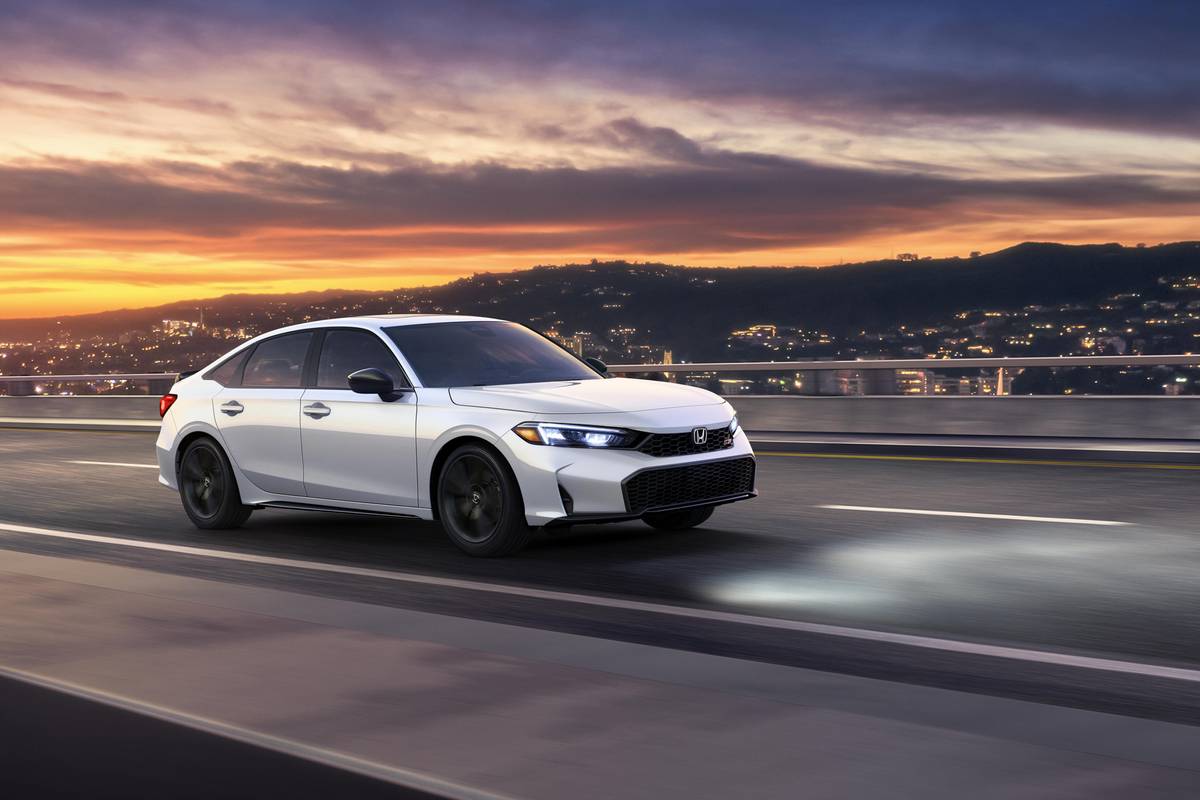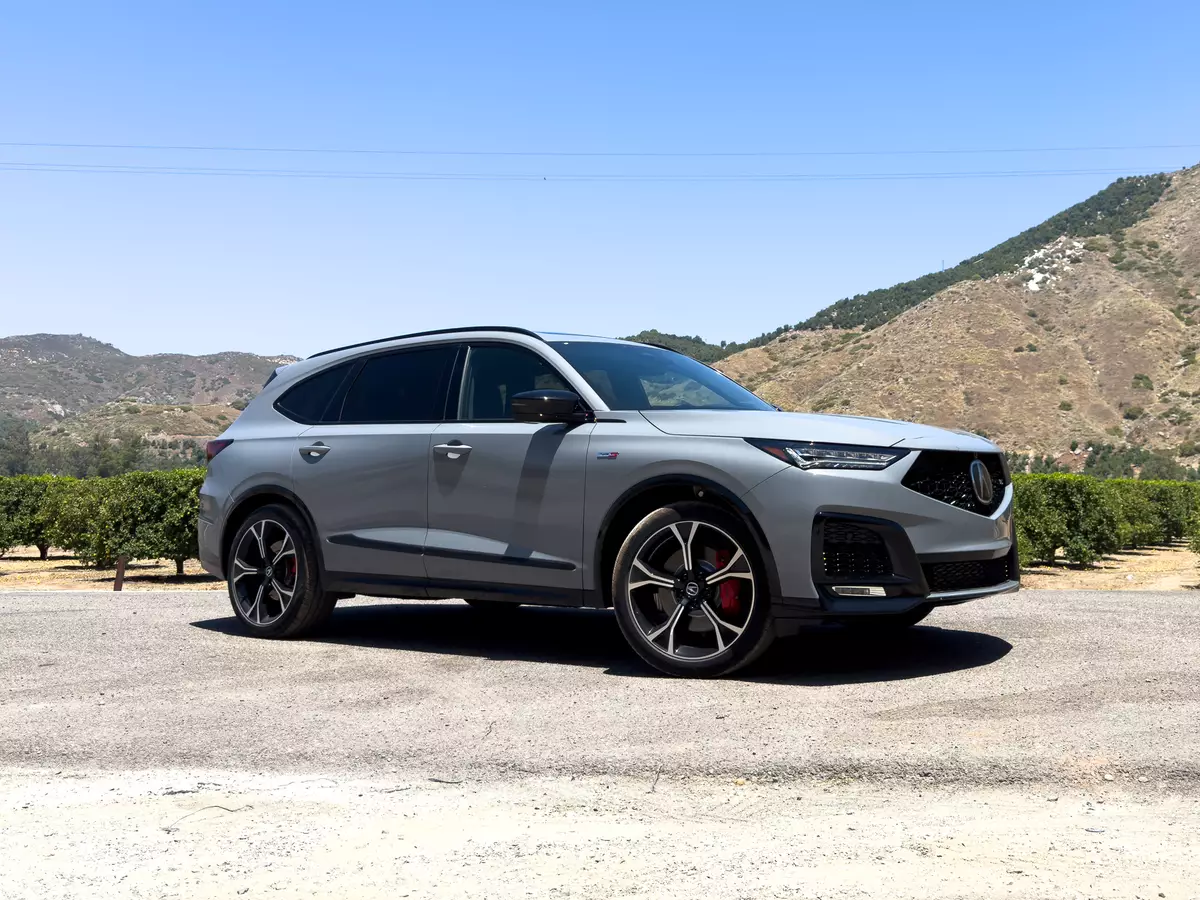Video: 2026 Honda Passport TrailSport Review: Rugged Redesign
By Cars.com Editors
April 1, 2025
Share
About the video
We traveled to Puerto Rico to get our first chance behind the wheel of the redesigned 2026 Honda Passport TrailSport. We got to drive the range-topping TrailSport Elite at Honda’s TrailSport Park and take a regular TrailSport on the pavement.
Transcript
I'm here in Puerto Rico with the redesigned 2026 Honda Passport Trailsport, and I'm getting my first chance to drive it both on and off road.
On day one, we headed to beautiful Trailsport Park for two hours of dedicated off-roading in the Trailsport Elite. Honda calls the new Passport Trailsport the most rugged Trailsport ever, and it certainly has the looks, but we wanted to see how it fared once the going actually got rough. During my off-roading time, I wanted to focus on a few specific things to see how the Passport Trailsport handled difficult obstacles, even if the trail was created specifically by Honda and unlikely to include anything the Passport couldn't handle. The Passport is not a body-on-frame SUV, but a unibody design which provides several advantages for day-to-day driving, but adds shortcomings during off-roading as it's less rugged and more prone to lifting a wheel off the ground as it crests obstacles. In that same vein, Honda's torque-vectoring i-VTM all-wheel drive system should be able to overcome many three-wheel situations. I wanted to see how well it responded to wheel lift scenarios and if it required a lot out of the driver. I also wanted to test the TrailWatch camera system, standard on the Trailsport Elite, and see how useful it was when I couldn't see what was ahead of me. Finally, I wanted to see how the Passport's updated powertrain now shared with the Pilot behaved while off-roading, and if it allowed for the kind of precise throttle inputs that make for smoother and easier off-roading. Other common features like off-road drive modes and hill descent control were also on my list. Let's start with a Passport's unibody construction, and its torque-vectoring all-wheel drive. The Passport's unibody construction is something serious off-roaders will use to disparage the Honda, and we did encounter obstacles where rather than articulating a wheel down to the ground, the Passport simply held one up in the air. It's an unsettling feeling at first, but the second-generation, i-VTM torque-vectoring all-wheel drive works quickly to send torque to wheels with traction. It can send up to 70% of the Passport's total torque to the rear wheels, and 100% of that amount to either individual wheel. And staying on the throttle helped us get up and over a variety of obstacles with ease. Is this the ideal construction for a dedicated off-road vehicle? No. Is it far more capable than the average person is likely going to need? Absolutely. Trail camera systems are not uncommon at all in off-road SUVs. And Honda's TrailWatch doesn't necessarily do a lot of unique things, but it works very well and helped me over and through a variety of obstacles during our time on the trail. It offers multiple views: out the front, along the sides, and a perpetual 360 degree overhead view. But my consistent favorite was the forward looking display with tire paths, which let me place my tires exactly where I wanted. The side view was less necessary on this bespoke trail, but would come in handy driving through narrow obstacles. I also enjoyed that when engaging the Trail drive mode, TrailWatch appeared automatically on the touch screen, as did specific gauges for pitch, roll, and elevation in the gauge cluster. TrailWatch will also automatically deactivate if you drive over 15 miles per hour, but reactivate if your speed drops below that, so you don't have to remember to turn it on all the time. That's great as the activation button is kind of annoying and hidden on the end of a stock on the steering column and not very obvious. With 285 horsepower and 262 pounds feet of torque, the Passport is not a high horsepower monster that can just conquer obstacles with brute force. But having experienced this drivetrain in the Pilot already, it does operate very smoothly on road. And, fortunately, it does the same during low speed off-roading. It's very easy to modulate the throttle and provide slightly more but not too much more power and crest a hill, and it's easy even without hill descent control turned on to hold power back and keep descents under control. Hill descent control works between 2 and 12 miles per hour, and you can adjust it using the brake and throttle pedals, and it does make a mechanical racket, but it gets the job done when you want to keep things really slow. Other off-road things to note about the Passport Trailsport include its 8.3 inches of ground clearance. That's not nothing, but it is somewhat less than a Subaru Crosstrek. So again, this is very clearly not a dedicated off-roader. It also has steel skid plates for underbody protection. That's great. Though we know from firsthand experience that one wrong move, and those steel skid plates won't protect you from doing thousands of dollars of damage. All Passports come with 18-inch wheels and the Trailsport trims wrap those in specially designed General Grabber all-terrain tires and provided lots of grip over varying terrain even when we stopped on a sandy beach, which if you know off-roading is never the best idea. The Passport Trailsport Elite handled everything we threw at it without breaking a sweat, and this was a much more difficult course than I experienced in Arizona with the Pilot Trailsport. I'm impressed by the Passport Trailsport Elite, and I feel like it can do a lot more than what we did here. On day two, we took the Passport on road to see if all the things that make it good at going off-road have consequences during your day-to-day driving on pavement, which is probably where you'll be spending most of your time. The good news about the Passport Trailsport is that Honda didn't screw up its on-road manners by making it capable off-road. The ride is comfortable, no doubt helped by the off-road tuned suspension and thick tire sidewalls absorbing harsher impacts, but the Passport doesn't wallow side to side or lean too heavily into corners. Chassis control is still excellent on pavement. We did not get to drive a Passport RTL with its all-season tires instead getting a mid-level Trailsport, not the Elite version, for the on-road portion. And the all-terrain tires do make a bit more noise than I've experienced on the Pilot Trailsport, but it's not a deal breaking amount. The all-terrain tires don't seem to sacrifice much grip on road either, holding nicely on recently rained on twisty roads. The 3.5 liter V6 has enough power for on-road driving that you'll never be left wanting during passes or merges, but throttle response is a little sluggish in normal drive mode. I prefer to use Sport for its sharper throttle response, but it does little else to change the driving characteristics. Fuel economy is disappointing, however. The base RTL offers only an estimated 21 miles per gallon combined. While the Trailsport drops to an estimated 20 miles per gallon combined. Fortunately for Honda, that's not too much lower than the new Toyota 4Runner or the Hyundai Santa Fe XRT, but it is lower. The Passport Trailsport is a capable enough off-roader for all but the most hardcore enthusiasts and comfortable enough on road to function as a daily driver. Most of why I'm here is to see how the Passport drives both on and off road, but it's worth mentioning something that we noticed in its debut, which is that this is just a really well-designed SUV from a packaging standpoint. Look how much backseat room I have behind my normal driving position. Ton of leg room, ton of head room, ton of shoulder room. There's no transmission tunnel so I can stretch out my legs or that probably leaves room for three adults with decent amounts of comfort. And on top of that, there's a very large cargo area with a good amount of underfloor storage, and it's very configurable depending on trim level and features, and we can't wait to get it in our Chicago offices to measure its cargo space using our in-house methodology. The redesigned 2026 Honda Passport is on sale now. Pricing starts at $46,200 for the base RTL version. The Trailsport I drove on road is priced from $49,900. And the Trailsport Elite I drove off road starts at $53,900. All prices include destination. The Passport is great off-road and still very comfortable on road. And if you're looking for a rugged looking SUV with great interior space and cargo room, the Passport should definitely be on your list. For my full review of the 2026 Honda Passport, head to cars.com/news. (gentle music)
Featured stories

By Cars.com Editors
June 20, 2025

By Jared Gall
June 19, 2025

By Drew Koenig
June 18, 2025
